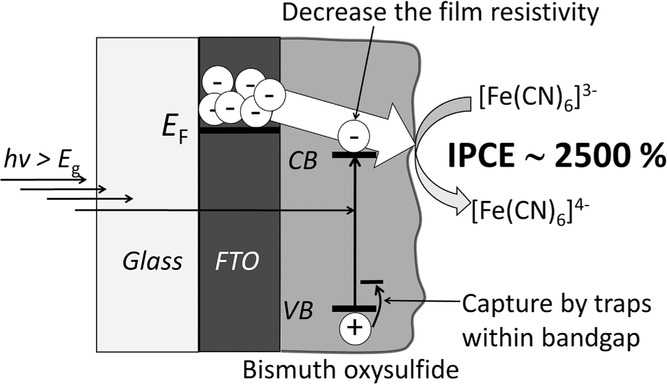Авторы: Evgeny A. Bondarenko, Eugene A. Streltsov, Mikalai V. Malashchonak, Alexander V. Mazanik, Anatoly I. Kulak,

Advanced Materials, 2017, 29 (40), pp 1702387 (1-6)
Abstract
Nanostructured layered bismuth oxysulfide films synthesized by chemical bath deposition reveal a giant incident photon-to-current conversion efficiency (IPCE). This study shows that surprisingly for the cathodic photocurrent in the photoreduction process, the IPCE reaches ≈2500% in aqueous solutions containing [Fe(CN)6]3−. The giant IPCE is observed starting from a certain minimal oxidizer concentration (c > 10−3m for [Fe(CN)6]3−) and decreases nonlinearly with an increase of illumination intensity. Giant IPCE is determined by the decrease in resistivity of the bismuth oxysulfide film under illumination with photoconductivity gain, which provides the possibility of charge carriers from an external circuit to participate in the photoreduction process. Giant IPCE is observed not only in [Fe(CN)6]3− solutions, but also in electrolytes containing other photoelectron acceptors: Fe3+, I3 −, quinone, H2O2. In all, solution-processed layered bismuth oxysulfide films offer large-area coverage, nontoxicity, low cost, and compatibility with a wide range of substrates. Abnormally high photoelectrochemical activity, as well as a band gap energy value favorable for efficient conversion of solar light (1.38 eV, direct optical transitions), proves the potential of bismuth oxysulfide photoelectrodes for a new generation of high-performance photoconverters.
DOI: 10.1002/adma.201702387
Read Full:
https://doi.org/10.1002/adma.201702387